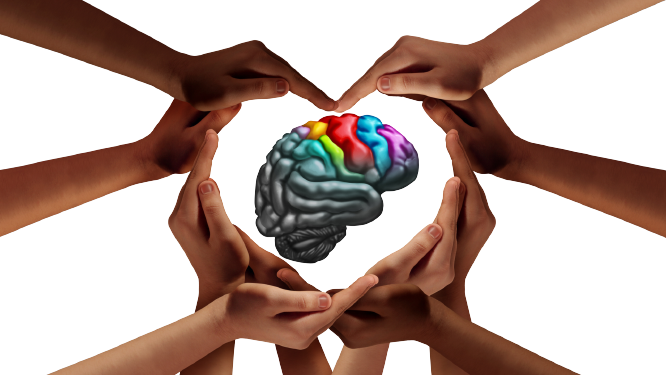Mental Health

On this Mental
Health Day, we wish all the students that they make mental health and well
being a priority. The present and future
CA,CMA,CS need to be kinder to themselves, recognise the signs of mental health
problems and take preventative action to help keep their mental health and
wellbeing on an even keel.
As Mental Health
Awareness Week kicks off, Anjul Gulati one of the mentor at Virtual mentors, is
urging Institute members and students to prioritise their mental health as the
stresses and strains of the post-pandemic landscape present us with an
opportunity to implement good mental wellbeing strategies.
The pandemic had affected people in their
working lives where people had experienced unpredictability at home. This had
increased the question regarding “How to
maintain mental health” which saw more searches this year than ever before, as
well as “how to recover from the same”.
Keeping
negativity at bay was crucial to many as the term “doomscrolling” became a
popular search in January. Doomscrolling means the act of spending an excessive
amount of screen time devoted to the absorption of negative news. Doomscrolling
is having a harmful effect on mental health.
Recognizing that
the face of work has changed and employee wellbeing and mental health is
more critical than ever. Also, the CA, CMA and CS student are taking online
classes rather than offline which means they are having less interaction with
the people. The various platform aims to promote the best practices for mental
health awareness.
Virtual Mentors highlight the 5 Steps to mental wellbeing as a useful starting point for strategies to help everyone cope with the stress of day-to-day life. They include being physically active, connecting with other people, and learning new skills.
5 Steps to Mental Well Being
1. Connect with other people
Good
relationships are important for your mental wellbeing. They can help you to
build a sense of belonging and self-worth, give you an opportunity to share
positive experiences provide emotional support and allow you to support others.
There are lots of things you could try to help build stronger and closer
relationships:
DO’s
ü if possible, take time each day to be with
your family, for example, try arranging a fixed time to eat dinner together
ü arrange a day out with friends you have not
seen for a while
ü try switching off the TV to talk or play a
game with your friends or family
ü have lunch with a friend/colleague
ü visit a friend or family member who needs
support or company
ü Volunteer at a local school, your apartment or
society, hospital or community group.
ü make the most of technology to stay in touch
with friends and family.
ü Video-chat apps like Skype and FaceTime are
useful, especially if you live far apart
Don’t
ü do not rely on technology or social media
alone to build relationships. It's easy to get into the habit of only ever
texting, messaging or emailing people
2. Be physically active
Being active is
not only great for your physical health and fitness. Evidence also shows it can
also improve your mental wellbeing by:
ü raising your self-esteem
ü helping you to set goals or challenges and
achieve them
ü causing chemical changes in your brain which
can help to positively change your mood
Find out more
about getting active
Do
ü find free activities to help you get fit
ü if you have a disability or long-term health
condition, find out about getting active with a disability
ü start running with good music
ü find out how to start swimming, cycling or
dancing
ü find out about getting started with exercise
Don’t
ü do not feel that you have to spend hours in a
gym. It's best to find activities you enjoy and make them a part of your life
3. Learn new
skills
Research shows
that learning new skills can also improve your mental wellbeing by:
•
Boosting
self-confidence and raising self-esteem
•
helping
you to build a sense of purpose
•
helping
you to connect with others
•
Even
if you feel like you do not have enough time, or you may not need to learn new
things, there are lots of different ways to bring learning into your life.
Some of the
things you could try include:
Do
ü try learning to cook something new. Find out
about healthy eating and cooking tips
ü try taking on a new responsibility at work,
such as mentoring a junior staff member or improving your presentation skills
ü work on a DIY project, such as fixing a broken
bike, garden gate or something bigger. There are lots of free video tutorials
online
ü consider signing up for a course at a local
college. You could try learning a new language or a practical skill such as
plumbing
ü try new hobbies that challenge you, such as
writing a blog, taking up a new sport or learning to paint
Don’t
ü do not feel you have to learn new
qualifications or sit exams if this does not interest you. It's best to find
activities you enjoy and make them a part of your life
4. Give to
others
Research suggests
that acts of giving and kindness can help improve your mental wellbeing by:
ü creating positive feelings and a sense of
reward
ü giving you a feeling of purpose and self-worth
ü helping you connect with other people
It could be small
acts of kindness towards other people, or larger ones like volunteering in your
local community.
Some examples of
the things you could try include:
ü saying thank you to someone for something they
have done for you
ü asking friends, family or colleagues how they
are and really listening to their answer
ü spending time with friends or relatives who
need support or company
ü offering to help someone you know with DIY or
a work project
ü volunteering in your community, such as
helping at a school, hospital or care home
5. Pay
attention to the present moment (mindfulness)
Paying more
attention to the present moment can improve your mental wellbeing. This
includes your thoughts and feelings, your body and the world around you.
Some people call
this awareness "mindfulness". Mindfulness can help you enjoy life
more and understand yourself better. It can positively change the way you feel
about life and how you approach challenges.


Leave your comment
Note: HTML is not translated!